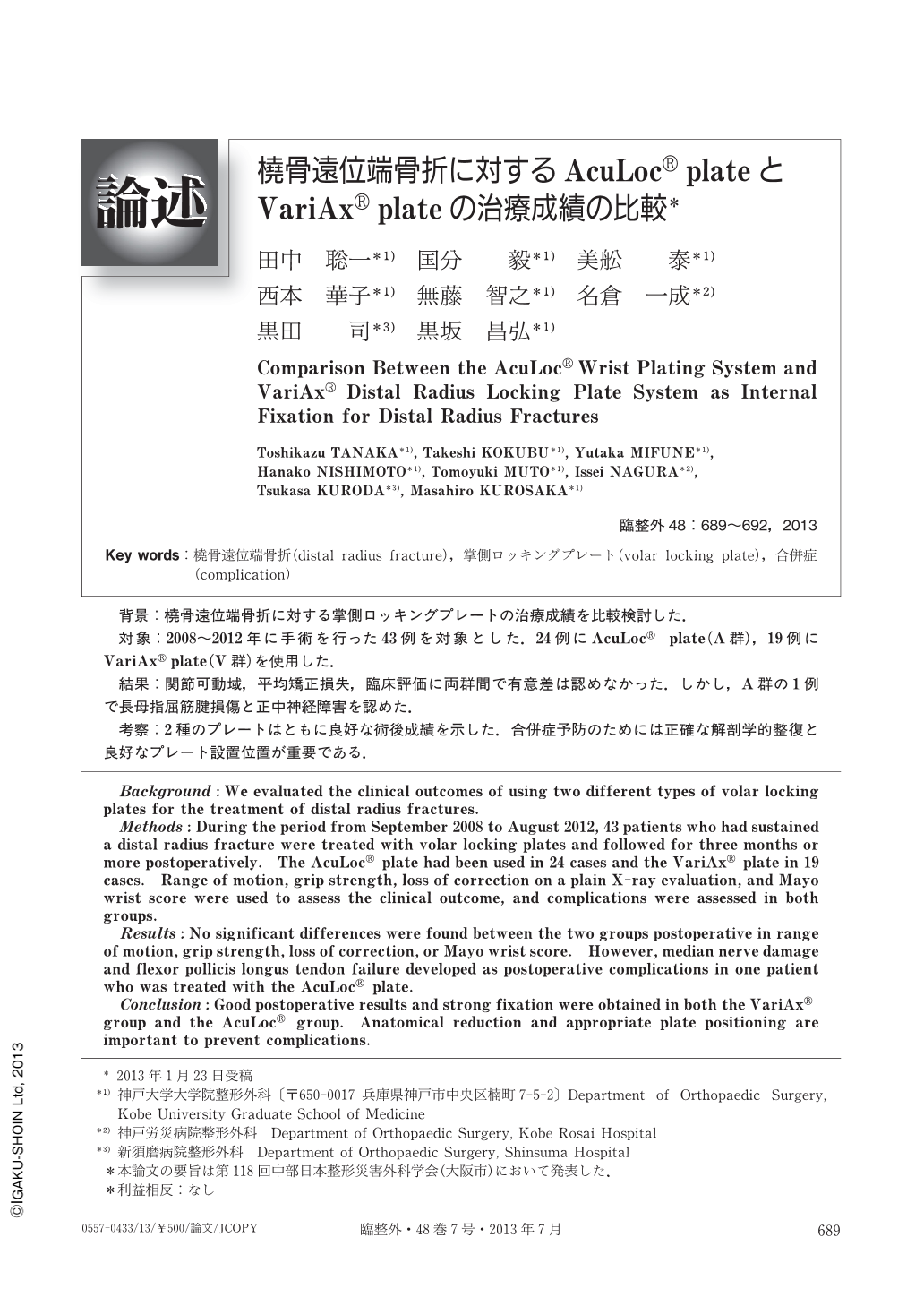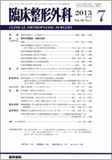Japanese
English
- 有料閲覧
- Abstract 文献概要
- 1ページ目 Look Inside
- 参考文献 Reference
背景:橈骨遠位端骨折に対する掌側ロッキングプレートの治療成績を比較検討した.
対象:2008~2012年に手術を行った43例を対象とした.24例にAcuLoc® plate(A群),19例にVariAx® plate(V群)を使用した.
結果:関節可動域,平均矯正損失,臨床評価に両群間で有意差は認めなかった.しかし,A群の1例で長母指屈筋腱損傷と正中神経障害を認めた.
考察:2種のプレートはともに良好な術後成績を示した.合併症予防のためには正確な解剖学的整復と良好なプレート設置位置が重要である.
Background:We evaluated the clinical outcomes of using two different types of volar locking plates for the treatment of distal radius fractures.
Methods:During the period from September 2008 to August 2012, 43 patients who had sustained a distal radius fracture were treated with volar locking plates and followed for three months or more postoperatively. The AcuLoc® plate had been used in 24 cases and the VariAx® plate in 19 cases. Range of motion, grip strength, loss of correction on a plain X-ray evaluation, and Mayo wrist score were used to assess the clinical outcome, and complications were assessed in both groups.
Results:No significant differences were found between the two groups postoperative in range of motion, grip strength, loss of correction, or Mayo wrist score. However, median nerve damage and flexor pollicis longus tendon failure developed as postoperative complications in one patient who was treated with the AcuLoc® plate.
Conclusion:Good postoperative results and strong fixation were obtained in both the VariAx® group and the AcuLoc® group. Anatomical reduction and appropriate plate positioning are important to prevent complications.

Copyright © 2013, Igaku-Shoin Ltd. All rights reserved.


